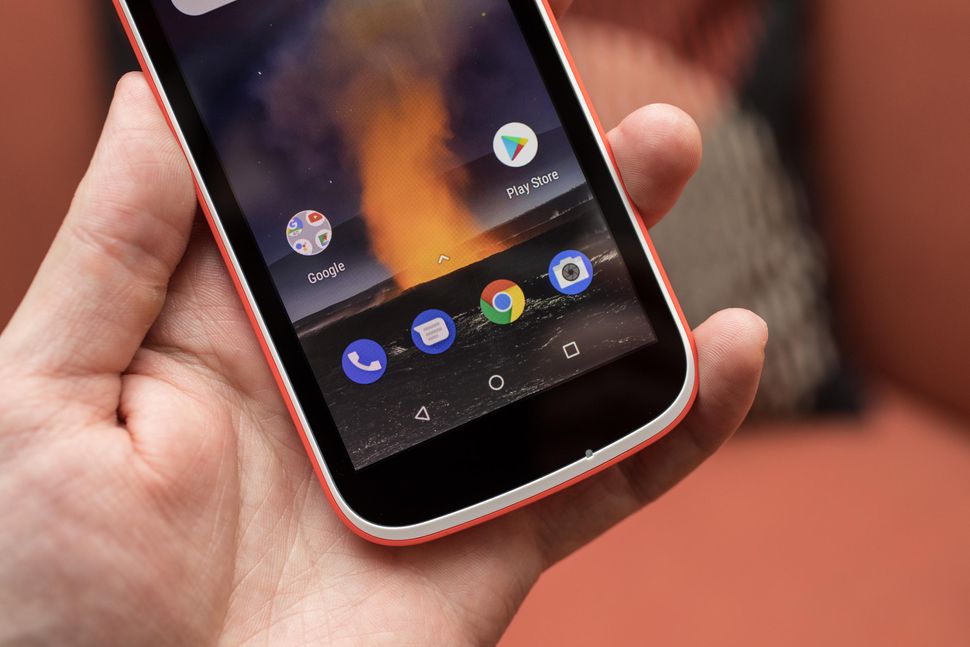We look at the three different Android platforms Google is now managing and explain where each one fits in the mobile industry.
Google now has three different approaches to Android it's currently deploying, with the help of hardware partners throughout the world.
In February, Android Oreo (Go Edition) made its formal debut, with hardware announcements from some well-known smartphone manufacturers such as ZTE, Alcatel, Huawei, and HMD Global (Nokia). Originally announced as Android Go, Google said that every Android release would have an Android Go configuration.
So, now, Google has rolled out Android Oreo (Go Edition). But it joins two other Android deviations: the main Android OS, which is currently Android Oreo, and Android One. Here's what you need to know about all three.
ANDROID OREO
What is Android Oreo?
Each year, Google updates Android, and the version number and name changes. In early 2017, Android 8.0 was announced, with the letter O up next in its naming scheme. Toward the end of the year, Google announced Android 8.0 Oreo and released it to vendors to be used in devices.
As the main version of the operating system, Google doesn't target any sort of device specifications with Android. Instead, it's up to hardware partners to decide how much memory or storage and what processor is used in a device running the latest release of Android.
What does Android Oreo feature?
Without having to worry too much about specifications and resources available, Android Oreo is where Google is able to push mobile devices. Here are a few features -- which Android Oreo currently has -- that push the limits of a smartphone:
Picture-in-picture mode: Gives users the option to watch a video or keep Google Maps running via a thumbnail in a corner of the screen, while simultaneously using another app.
Split-screen apps: Android Oreo is capable of displaying two apps, with adjustable windows, allowing a user to reply to an email in Gmail while using Google search in Chrome.
Google Daydream: Converts an otherwise normal smartphone in a Daydream-certified virtual reality headset for games, movies, and educational apps.
Which devices run Android Oreo?
Google uses Android Oreo on its own flagship line of Pixel smartphones. This is also the same core version of Android that manufacturers and third-party companies use in their own tablets, televisions, and similar products.
Outside of Google's own devices, Android Oreo is used on a wide number of phones and tablets. The newly announced Samsung Galaxy S9 and Galaxy S9 Plus, for example, are both powered by Android Oreo. Huawei Mate 10 Pro, the OnePlus 5T, and the bulk of Motorola's 2017 lineup all run Android Oreo, too.
ANDROID ONE
What is Android One?
Google announced Android One in 2014. It positioned the new program as a means to provide emerging countries with affordable access to Android devices -- and, by extension, the internet.
Since then, Android One has done just that, but it has also grown up. Instead of only releasing low-end smartphones with a barebones version of Android, device makers have begun to push toward mid-range devices. These have respectable specifications and are backed by Google's Android One program across the globe, including the US.
What does Android One feature?
According to Google, all Android One products come with a few guarantees:
- Regular security updates for three years.
- Android OS updates for two years.
- The core Android interface and Google services.
- Approved hardware based on performance tests.
In other words, Android One is a vanilla Android experience -- free of any proprietary skins, interfaces, or unnecessary apps from hardware manufacturers. On top of that, an Android One device won't stop receiving updates for up to three years.
Both of those promises answer a lot of complaints about the Android ecosystem as a whole. For example, Samsung and LG each make modest changes to the overall look and feel of Android -- but not all those changes actually improve the experience. Furthermore, Samsung has a reputation for being slow when it comes to releasing software updates.
Which devices run Android One?
Expect to see a wide range of specifications -- from mid-range to flagship-level -- on Android One devices.
Some examples of Android One devices include the Motorola Moto X4, HTC U11 Life, Nokia 8 Sirocco, and the Xiaomi Mi A1.
ANDROID OREO (GO EDITION)
What is Android Oreo (Go Edition)?
Originally announced in May 2017, Android Go picks up where Android One left off. This stripped-down OS is built to run on devices with 1GB of memory or less.
Google's goal is for devices to be priced as low as possible.
What does Android Oreo (Go Edition) feature?
Now referred to as Android Oreo (Go Edition), every core Android app, from Gmail to Google Maps to Assistant, has been rebuilt and stripped of any unnecessary bloat. By streamlining the operating system and core apps, Android Oreo (Go Edition) provides more storage to the end user, even on a device with only 8GB of storage.
Moreover, Google's Data Saver service helps users -- where mobile data plans are slow and expensive to use -- save data, by providing tools to restrict background data access.
Which devices run Android Oreo (Go Edition)?
We got our first glimpse of Go Edition handsets at MWC 2018.
ZTE announced the ZTE Tempo Go, a Go Edition phone that's unlocked and will sell for $80. HMD revealed the Android Oreo Go Edition Nokia 1, which is priced at $85. Alcatel announced the 1X, a phone that will cost $120.
All these devices have 1GB of memory, either 8GB or 16GB of storage, and an entry-level processor (Qualcomm Snapdragon 210 or similar). Again, the purpose of Go Edition phones isn't to provide a robust hardware experience with blazing-fast processors and 128GB of storage.






No comments:
Post a Comment